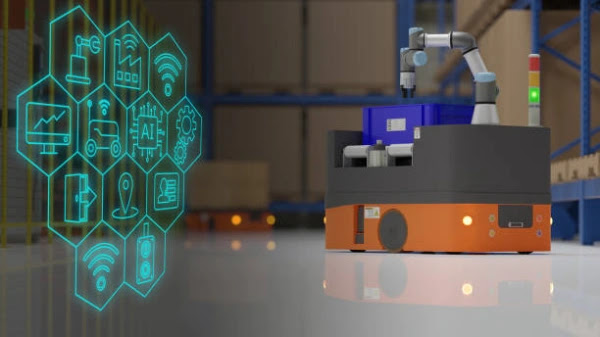Featured
- Get link
- X
- Other Apps
What are the Future of Sustainable Agriculture Technologies?
Digital Agriculture: The integration of big data, the Internet of Things (IoT), and artificial intelligence will revolutionize agriculture by providing real-time data on crop health, weather conditions, and pest outbreaks.
Climate-Resilient Crops: The development of
climate-resilient crop varieties can help farmers adapt to changing climate
conditions and ensure food security.
Circular Agriculture: Circular agriculture, which focuses on
minimizing waste and maximizing resource efficiency, will gain prominence. It
includes practices like composting, recycling agricultural waste, and using
byproducts to generate energy.
Urban Agriculture: The growth of urban agriculture and
vertical farming will help reduce the environmental footprint of food
production by minimizing transportation and utilizing urban spaces efficiently.
Sustainable Livestock Farming: Sustainable livestock
practices, including rotational grazing, reduced antibiotic use, and methane
reduction strategies, will be vital for sustainable agriculture.
What are the Profits of Sustainable Agriculture Technologies?
Environmental Conservation: Sustainable agriculture
technologies minimize soil erosion, water pollution, and habitat destruction.
They also contribute to biodiversity conservation and the protection of natural
ecosystems.
Resource Efficiency: Precision agriculture, no-till farming,
and efficient irrigation systems help conserve valuable resources such as water
and energy.
Improved Soil Health: Practices like cover cropping, crop
rotation, and organic farming enhance soil structure and nutrient content,
resulting in improved long-term soil health and fertility.
Reduced Carbon Emissions: Sustainable farming practices
sequester carbon in the soil and reduce the energy consumption associated with
conventional agriculture, contributing to climate change mitigation.
Higher Yields: While the primary goal of sustainable
agriculture is environmental stewardship, it often leads to increased crop
yields due to optimized resource use and improved soil health.
Economic Viability: By reducing production costs, increasing
yields, and meeting the growing demand for sustainably produced goods,
sustainable agriculture can enhance the economic viability of farming
operations.
Enhanced Food Security: Sustainable agriculture technologies help ensure a stable and consistent food supply by promoting environmentally
responsible practices and reducing the negative impacts of climate change on
agriculture.
What are the Applications of Sustainable Agriculture Technologies?
Precision Agriculture: Precision agriculture employs
data-driven approaches, such as GPS technology, remote sensing, and real-time
monitoring, to optimize resource use and improve crop management. It enables
farmers to tailor irrigation, fertilization, and pest control to specific field
conditions, resulting in higher yields and reduced resource wastage.
Agroforestry: Agroforestry combines the cultivation of trees
or shrubs with traditional crop or livestock farming. Trees can provide shade,
windbreaks, and improve soil quality, while also acting as a carbon sink to
mitigate climate change.
No-Till Farming: No-till farming reduces soil erosion and
carbon emissions by minimizing the disruption of soil through plowing. It also
conserves soil moisture and improves soil health.
Cover Crops: Cover yields are planted to protect and enrich
the soil during periods when the main crop is not growing. They prevent soil
erosion, suppress weeds, and add nutrients to the soil.
Crop Rotation: Crop rotation is a practice where different
crops are grown in succession on the same piece of land. It helps break pest
and disease cycles, improves soil fertility, and enhances overall ecosystem
health.
Biological Pest Control: Biological pest control involves
using natural predators, parasites, or pathogens to manage pest populations,
reducing the need for chemical pesticides.
Drip Irrigation: Drip irrigation systems bring water
directly to the root zone of plants, reducing water wastage and allowing for
precise control of irrigation, even in arid regions.
Organic Farming: Organic farming avoids synthetic pesticides
and fertilizers, focusing on natural and sustainable practices to maintain soil
health and prevent environmental harm.
Conclusion
The future of sustainable agriculture technologies is promising.
These technologies take the potential to help us produce more food while using
fewer resources and reducing our environmental impact. As these technologies
continue to develop and become more widely adopted, they will play a vital role
in ensuring a sustainable food supply for the future.
Recommendations
There are some things that to accelerate the adoption of
sustainable agriculture technologies:
Governments can provide financial and technical support to
farmers to help them adopt new technologies.
Researchers can continue to develop new and innovative
sustainable agriculture technologies.
The private sector can invest in developing and
commercializing sustainable agriculture technologies.
Consumers can choose to buy food that is produce using
sustainable methods.
By working together, we can create a more sustainable future
for agriculture.
- Get link
- X
- Other Apps


